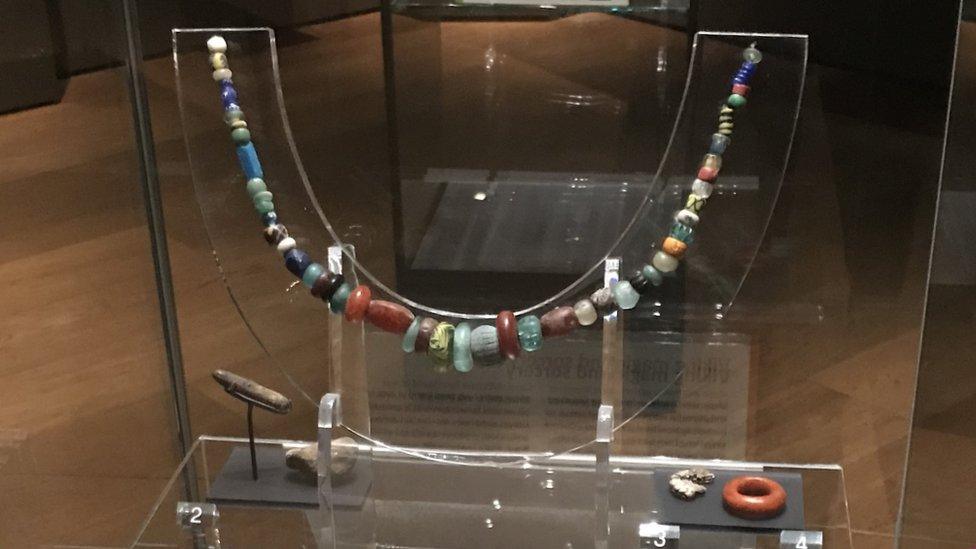Isle of Man Round Mounds: 'Spectacular' 4,000-year-old jet necklace found
- Published
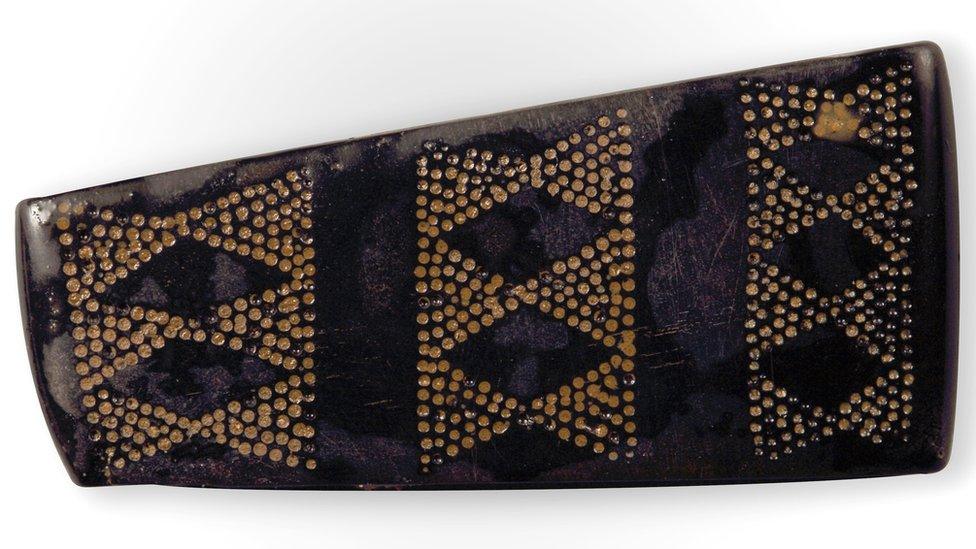
Sand on the beads from the burial site will be removed as part of the conservation process
A 4,000-year-old necklace has been uncovered during an archaeological dig on the Isle of Man.
The piece of jewellery, found in the west of the island, is made up of 122 "intricately" decorated jet beads each measuring between 1cm and 5cm.
Thought to have originated in Whitby, North Yorkshire it is the first of its kind to be found on the Isle of Man.
When fully assembled, the necklace was crescent-shaped and made from multiple strings.
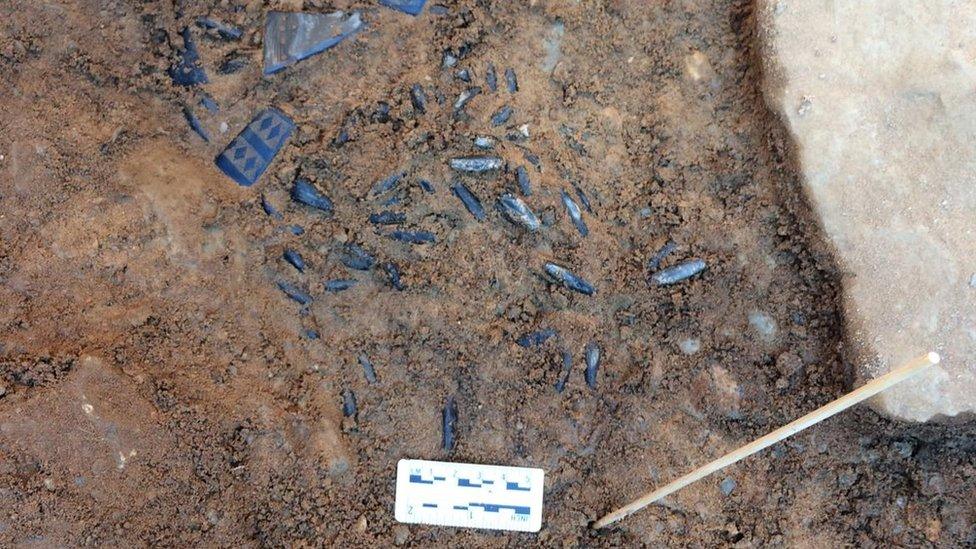
The beads were found alongside skeletal remains
The Round Mounds of the Isle of Man project hopes to discover more about Bronze Age burial practices and the island's connections with other parts of the British Isles.
The excavation of the ancient burial sites has been running for four years.
More than 40 experts and students from two UK universities worked on this year's four-week dig near Kirk Michael.

Chris Fowler and Rachel Crellin have been working on the project for four years
The cremated remains of seven people have been found on the site to date but this was the first time an "inhumation", or skeletal remains, has been uncovered.
Rachel Crellin, of the University of Leicester, is leading the project alongside Chris Fowler of Newcastle University.
She said that although the necklace was "undeniably beautiful", the "real value" of the find was the burial itself.
The grave would allow the team to "connect it up to this story about Britain and Ireland," Dr Crellin added.
The "deliberate" placing of stones, thought to be a grinding stone and cutting block, next to the body could be of "particular significance" regarding "things like food, productivity and fertility," Dr Fowler added.
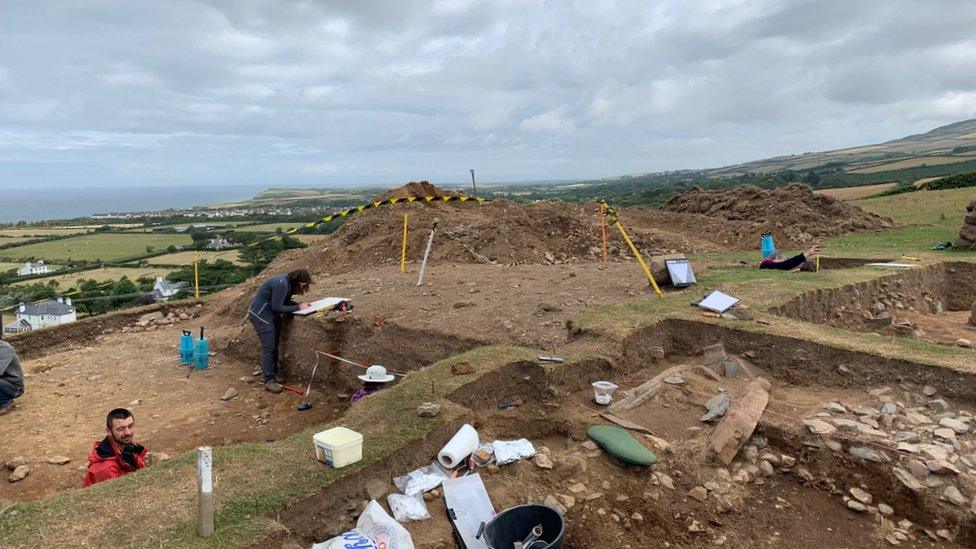
The necklace was found in a grave about 6.5 feet (2m) below the top of the mound
Funding for the project was provided by Manx National Heritage (MNH) and the two universities.
MNH Director Edmund Southworth said it was "hoped" the "very fragile" necklace would be put on display, but that would be "some considerable time away".
The piece will now be digitally reconstructed, while scientific analysis will be carried out on the human remains.
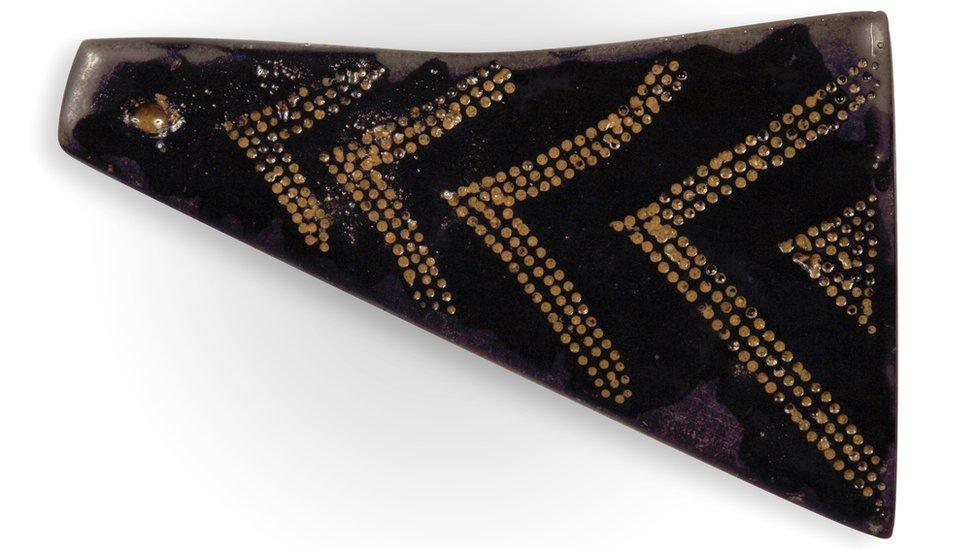
There are intricately carved patterns on the prehistoric beads
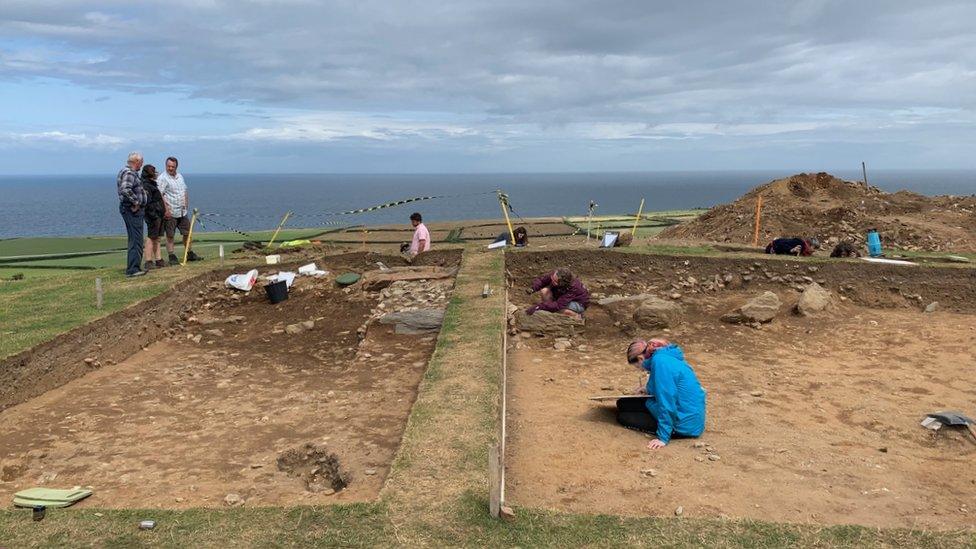
Two new 26ft (8m) trenches were excavated this year alongside one first opened up last year
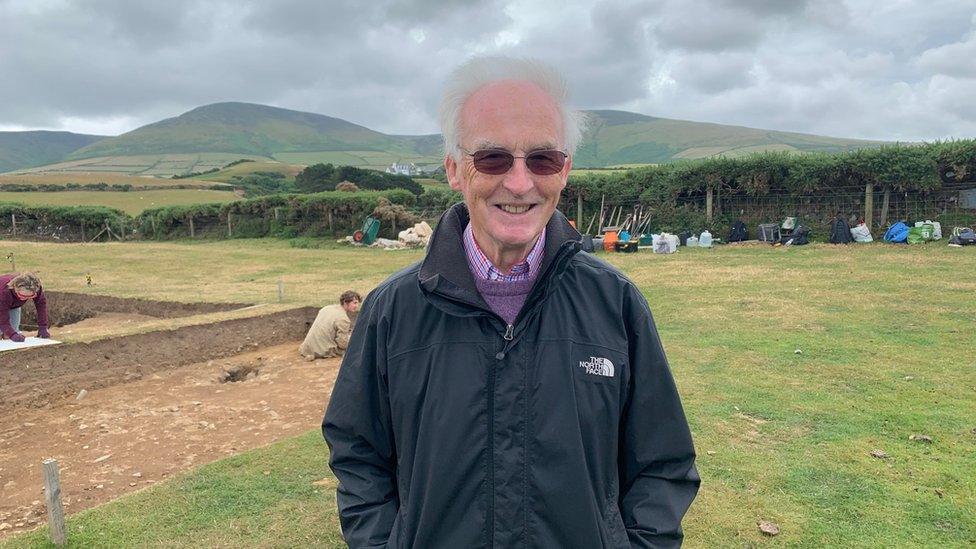
Landowner Robert Cannell said it was "absolutely fascinating" to find out what the mounds were
- Published28 June 2019
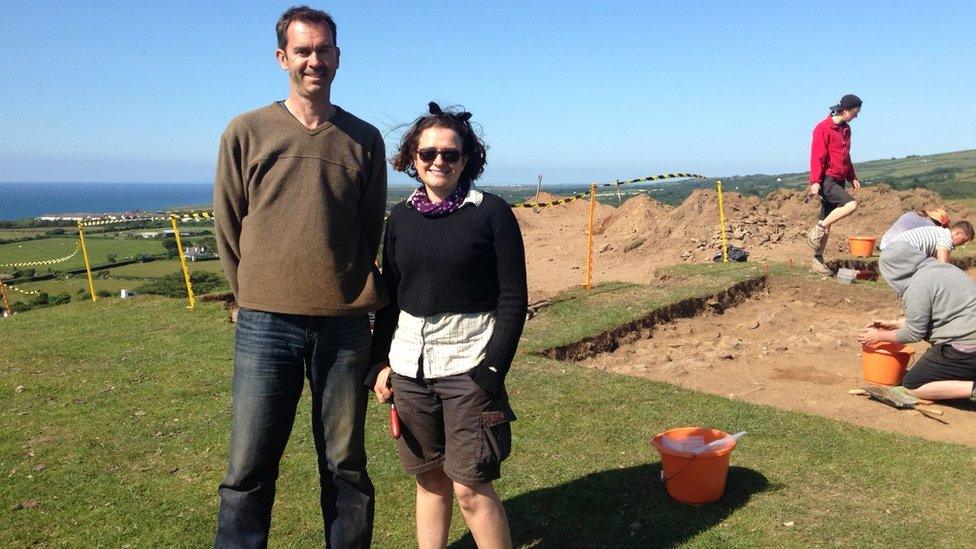
- Published20 February 2019
